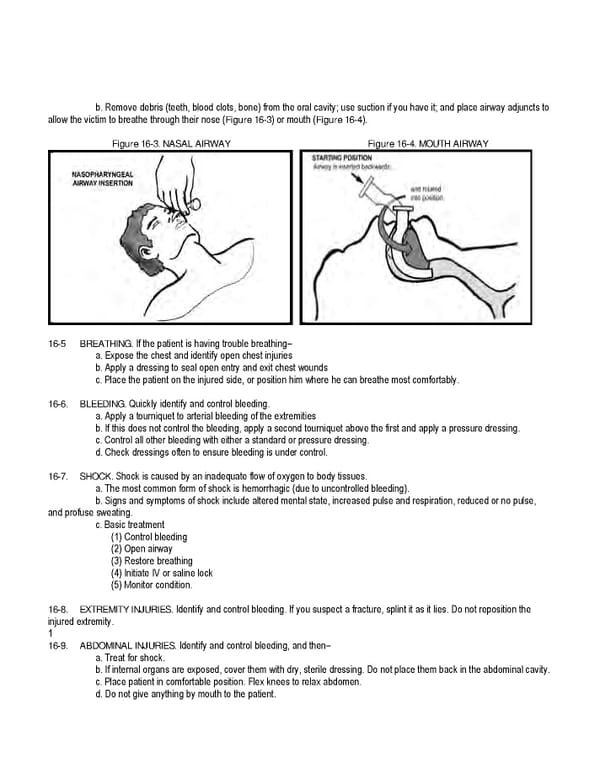b. Remove debris (teeth, blood clots, bone) from the oral cavity; use suction if you have it; and place airway adjuncts to allow the victim to breathe through their nose (Figure 16-3) or mouth (Figure 16-4). Figure 16-3. NASAL AIRWAY Figure 16-4. MOUTH AIRWAY 16-5 BREATHING. If the patient is having trouble breathing– a. Expose the chest and identify open chest injuries b. Apply a dressing to seal open entry and exit chest wounds c. Place the patient on the injured side, or position him where he can breathe most comfortably. 16-6. BLEEDING. Quickly identify and control bleeding. a. Apply a tourniquet to arterial bleeding of the extremities b. If this does not control the bleeding, apply a second tourniquet above the first and apply a pressure dressing. c. Control all other bleeding with either a standard or pressure dressing. d. Check dressings often to ensure bleeding is under control. 16-7. SHOCK. Shock is caused by an inadequate flow of oxygen to body tissues. a. The most common form of shock is hemorrhagic (due to uncontrolled bleeding). b. Signs and symptoms of shock include altered mental state, increased pulse and respiration, reduced or no pulse, and profuse sweating. c. Basic treatment (1) Control bleeding (2) Open airway (3) Restore breathing (4) Initiate IV or saline lock (5) Monitor condition. 16-8. EXTREMITY INJURIES. Identify and control bleeding. If you suspect a fracture, splint it as it lies. Do not reposition the injured extremity. 1 16-9. ABDOMINAL INJURIES. Identify and control bleeding, and then– a. Treat for shock. b. If internal organs are exposed, cover them with dry, sterile dressing. Do not place them back in the abdominal cavity. c. Place patient in comfortable position. Flex knees to relax abdomen. d. Do not give anything by mouth to the patient.
 Ranger Handbook Page 297 Page 299
Ranger Handbook Page 297 Page 299